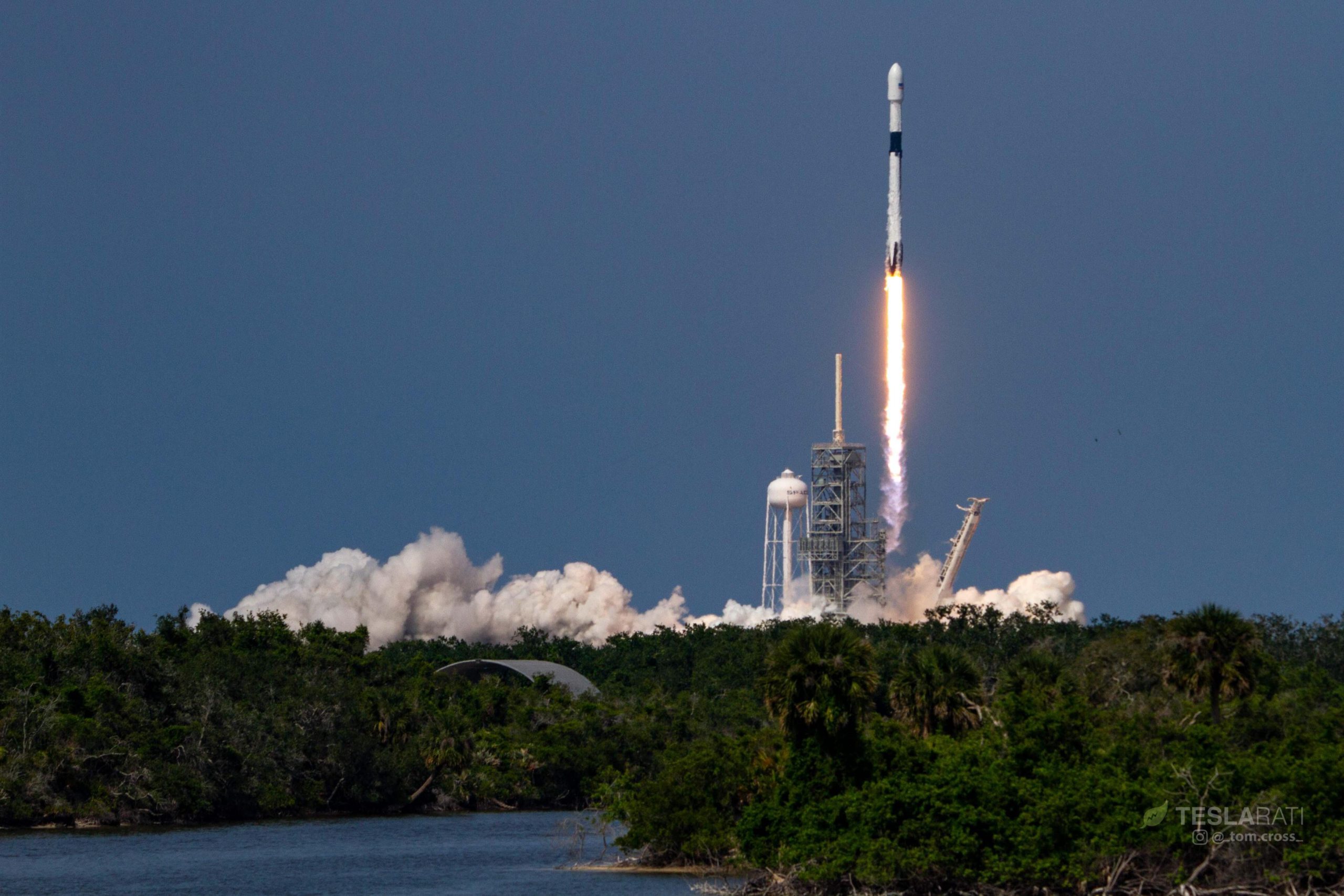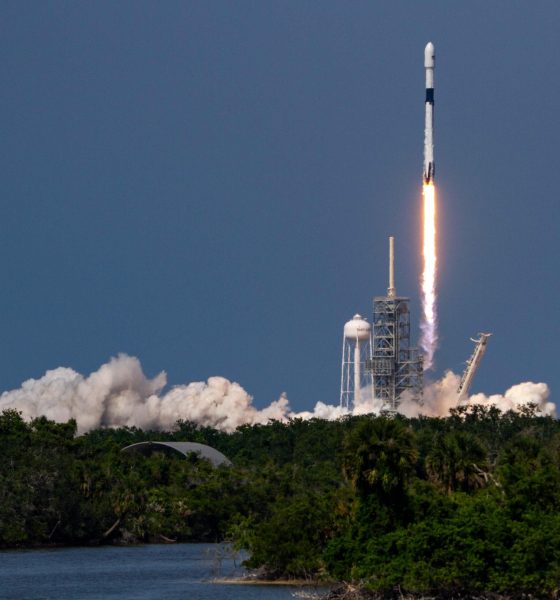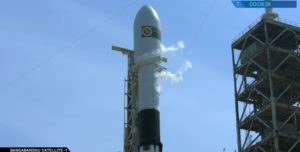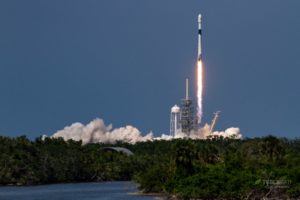

News
SpaceX’s successful debut of Falcon 9 Block 5 heralds the future of reusable rocketry
Following a brief software bug-triggered abort during the first attempt, SpaceX has successfully debuted its first Falcon 9 Block 5 rocket from Florida’s Kennedy Space Center, marking the true beginning of a new era of highly reusable commercial rocketry, as well as Bangladesh’s official entry into satellite communications with the Bangabandhu-1 satellite.
Followed minutes later by the first landing of its next-generation booster aboard the ocean-going drone ship Of Course I Still Love You (OCISLY), many more Falcon 9 Block 5 launches can now be expected to follow later this year as SpaceX ramps up the manufacture and shipment of new boosters, upper stages, and payload fairings to its test and launch facilities.
Fundamentally, this launch is a historic achievement for SpaceX. According to CEO Elon Musk, barring unforeseen discoveries during the pathfinder booster’s post-recovery teardown, Falcon 9 Block 5 as it stands today is nearly capable of ushering in a new era of truly reusable rockets, and is designed to (nominally) fly as many as ten times in a row with the barest minimum of refurbishment. While it is all but guaranteed that small optimizations and upgrades will continue to be made throughout the launch vehicle, today’s mission – the 25th successful booster landing and 55th launch of Falcon 9 – by all appearances successfully flight-tested almost every single one of the rocket’s dramatically upgraded systems, ranging from entirely new avionics to uprated and upgraded Merlin engines and landing legs.
- F9 B1046 venting ahead of its inaugural launch. (SpaceX)
- Falcon 9 Block 5 successfully debuted earlier today, completing a nearly-flawless launch and landing. (Tom Cross)
Somewhat fittingly, the only problem visible on the company’s webcast of the rocket’s critical debut was with the webcast itself, in the form of some odd shaking and connectivity issues on the first stage (and the second stage to a lesser degree). Thankfully, this “bug” is skin-deep – its only negative impact was mild annoyance among the many thousands watching live, a small price to pay to such an extraordinary show. Falcon 9 B1046 and its upper stage performed nominally, landing aboard the drone ship Of Course I Still Love You and flawlessly placing Bangladesh’s first geostationary communications satellite into a transfer orbit.
- OCISLY patiently awaits its rocket friend. (SpaceX)
- B1046 completes successfully landed aboard OCISLY; hopefully the first of many more to come. (SpaceX)
With its debut complete, SpaceX’s first Block 5 booster will now head back to Port Canaveral after being safely secured by everyone’s favorite rocket-grabbing robot. After its return to land, it’s extremely likely that SpaceX will choose to transport the rocket back to either Hawthorne or McGregor to conduct an extremely thorough teardown analysis of the booster, checking to ensure that each component and system made it through a high-energy reentry with minimal impact. While small changes are all but guaranteed, this teardown will hopefully confirm SpaceX’s extensive modeling and ground-testing – in other words, Block 5’s design will hopefully be shown to be ready for rapid reusability and extreme reliability. More likely than not, B1046 will then be reassembled, perhaps followed by extensive static-fire testing in Texas, after which it will likely return to SpaceX’s operational rocket fleet, potentially conducting dozens of launches over the next several years. Perhaps SpaceX will choose to turn it into a new historic monument after several reflights.
Finally, congratulations to Bangladesh on the successful launch of their first geostationary communications satellite.
- Inside Falcon 9’s interstage before stage separation. Note MVac and its massive nozzle. (SpaceX)
- Bangabandhu-1 was successfully deployed just over half an hour after lifting off from the coast of Florida. (SpaceX)
Launch photographer Tom Cross is planning to be there in person for OCISLY and B1046’s arrival in Port, and will hopefully be able to document the historic recovery and the booster’s (fingers crossed) resilience, as well as the first use of Octagrabber with a Block 5 Falcon 9. Remote camera pickup is currently scheduled for tomorrow morning.
Follow us for live updates, behind-the-scenes sneak peeks, and a sea of beautiful photos from our East and West coast photographers.
Teslarati – Instagram – Twitter
Tom Cross – Twitter
Pauline Acalin – Twitter
Eric Ralph – Twitter

News
Tesla FSD fleet is nearing 7 billion total miles, including 2.5 billion city miles
As can be seen on Tesla’s official FSD webpage, vehicles equipped with the system have now navigated over 6.99 billion miles.

Tesla’s Full Self-Driving (Supervised) fleet is closing in on almost 7 billion total miles driven, as per data posted by the company on its official FSD webpage.
These figures hint at the massive scale of data fueling Tesla’s rapid FSD improvements, which have been quite notable as of late.
FSD mileage milestones
As can be seen on Tesla’s official FSD webpage, vehicles equipped with the system have now navigated over 6.99 billion miles. Tesla owner and avid FSD tester Whole Mars Catalog also shared a screenshot indicating that from the nearly 7 billion miles traveled by the FSD fleet, more than 2.5 billion miles were driven inside cities.
City miles are particularly valuable for complex urban scenarios like unprotected turns, pedestrian interactions, and traffic lights. This is also the difference-maker for FSD, as only complex solutions, such as Waymo’s self-driving taxis, operate similarly on inner-city streets. And even then, incidents such as the San Francisco blackouts have proven challenging for sensor-rich vehicles like Waymos.
Tesla’s data edge
Tesla has a number of advantages in the autonomous vehicle sector, one of which is the size of its fleet and the number of vehicles training FSD on real-world roads. Tesla’s nearly 7 billion FSD miles then allow the company to roll out updates that make its vehicles behave like they are being driven by experienced drivers, even if they are operating on their own.
So notable are Tesla’s improvements to FSD that NVIDIA Director of Robotics Jim Fan, after experiencing FSD v14, noted that the system is the first AI that passes what he described as a “Physical Turing Test.”
“Despite knowing exactly how robot learning works, I still find it magical watching the steering wheel turn by itself. First it feels surreal, next it becomes routine. Then, like the smartphone, taking it away actively hurts. This is how humanity gets rewired and glued to god-like technologies,” Fan wrote in a post on X.
News
Tesla starts showing how FSD will change lives in Europe
Local officials tested the system on narrow country roads and were impressed by FSD’s smooth, human-like driving, with some calling the service a game-changer for everyday life in areas that are far from urban centers.

Tesla has launched Europe’s first public shuttle service using Full Self-Driving (Supervised) in the rural Eifelkreis Bitburg-Prüm region of Germany, demonstrating how the technology can restore independence and mobility for people who struggle with limited transport options.
Local officials tested the system on narrow country roads and were impressed by FSD’s smooth, human-like driving, with some calling the service a game-changer for everyday life in areas that are far from urban centers.
Officials see real impact on rural residents
Arzfeld Mayor Johannes Kuhl and District Administrator Andreas Kruppert personally tested the Tesla shuttle service. This allowed them to see just how well FSD navigated winding lanes and rural roads confidently. Kruppert said, “Autonomous driving sounds like science fiction to many, but we simply see here that it works totally well in rural regions too.” Kuhl, for his part, also noted that FSD “feels like a very experienced driver.”
The pilot complements the area’s “Citizen Bus” program, which provides on-demand rides for elderly residents who can no longer drive themselves. Tesla Europe shared a video of a demonstration of the service, highlighting how FSD gives people their freedom back, even in places where public transport is not as prevalent.
What the Ministry for Economic Affairs and Transport says
Rhineland-Palatinate’s Minister Daniela Schmitt supported the project, praising the collaboration that made this “first of its kind in Europe” possible. As per the ministry, the rural rollout for the service shows FSD’s potential beyond major cities, and it delivers tangible benefits like grocery runs, doctor visits, and social connections for isolated residents.
“Reliable and flexible mobility is especially vital in rural areas. With the launch of a shuttle service using self-driving vehicles (FSD supervised) by Tesla in the Eifelkreis Bitburg-Prüm, an innovative pilot project is now getting underway that complements local community bus services. It is the first project of its kind in Europe.
“The result is a real gain for rural mobility: greater accessibility, more flexibility and tangible benefits for everyday life. A strong signal for innovation, cooperation and future-oriented mobility beyond urban centers,” the ministry wrote in a LinkedIn post.
News
Tesla China quietly posts Robotaxi-related job listing
Tesla China is currently seeking a Low Voltage Electrical Engineer to work on circuit board design for the company’s autonomous vehicles.

Tesla has posted a new job listing in Shanghai explicitly tied to its Robotaxi program, fueling speculation that the company is preparing to launch its dedicated autonomous ride-hailing service in China.
As noted in the listing, Tesla China is currently seeking a Low Voltage Electrical Engineer to work on circuit board design for the company’s autonomous vehicles.
Robotaxi-specific role
The listing, which was shared on social media platform X by industry watcher @tslaming, suggested that Tesla China is looking to fill the role urgently. The job listing itself specifically mentions that the person hired for the role will be working on the Low Voltage Hardware team, which would design the circuit boards that would serve as the nervous system of the Robotaxi.
Key tasks for the role, as indicated in the job listing, include collaboration with PCB layout, firmware, mechanical, program management, and validation teams, among other responsibilities. The role is based in Shanghai.
China Robotaxi launch
China represents a massive potential market for robotaxis, with its dense urban centers and supportive policies in select cities. Tesla has limited permission to roll out FSD in the country, though despite this, its vehicles have been hailed as among the best in the market when it comes to autonomous features. So far, at least, it appears that China supports Tesla’s FSD and Robotaxi rollout.
This was hinted at in November, when Tesla brought the Cybercab to the 8th China International Import Expo (CIIE) in Shanghai, marking the first time that the autonomous two-seater was brought to the Asia-Pacific region. The vehicle, despite not having a release date in China, received a significant amount of interest among the event’s attendees.














